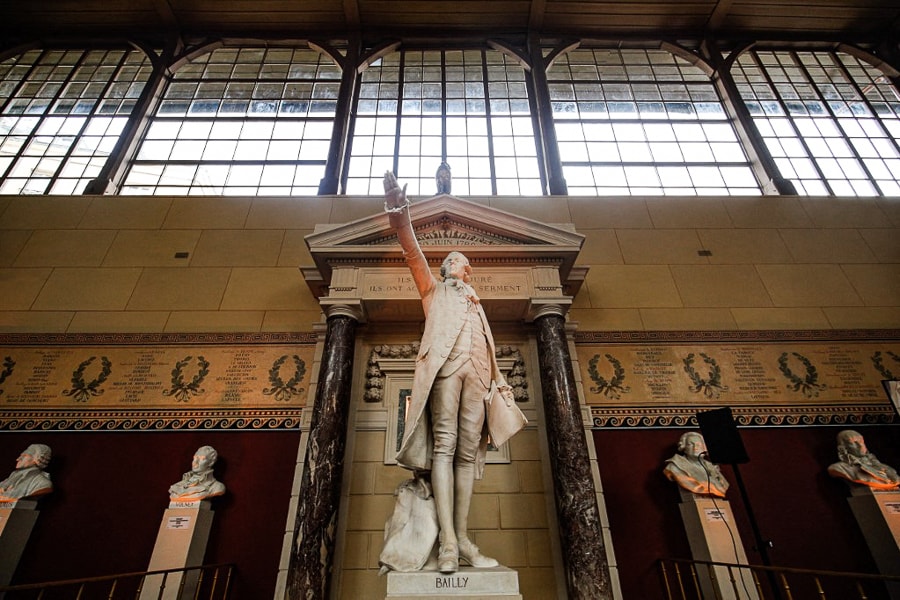
Palace of Versailles reopens room where French democracy was founded
The room was made in 1686 for Louis XIV to play Jeu de Paume—also known as "real tennis", an early version of the modern game. But more than a century later, it became the unlikely venue for a key moment of the French Revolution
 A photograph taken on March 2, 2022 shows the statue ofFrench astronomer, mathematician, freemason, and political leader Jean Sylvain Bailly at the Jeu de Paume hall in Versailles, near Paris. After 8 months of restoration work, the Jeu de Paume room in Versailles, emblematic place of the Revolution in France and symbol of the birth of democracy, is about to reopen its doors to public on April 1, 2022. (Credit: Sameer Al-DOUMY / AFP)
A photograph taken on March 2, 2022 shows the statue ofFrench astronomer, mathematician, freemason, and political leader Jean Sylvain Bailly at the Jeu de Paume hall in Versailles, near Paris. After 8 months of restoration work, the Jeu de Paume room in Versailles, emblematic place of the Revolution in France and symbol of the birth of democracy, is about to reopen its doors to public on April 1, 2022. (Credit: Sameer Al-DOUMY / AFP)
Versailles, France: The Palace of Versailles is reopening the site of on an often-overlooked part of its history on Friday with a fully restored Jeu de Paume Room that hosted the founding of French democracy.
The room was made in 1686 for Louis XIV to play Jeu de Paume — also known as "real tennis", an early version of the modern game.
But more than a century later, it became the unlikely venue for a key moment of the French Revolution.
On June 20, 1789, a group of people's representatives, who were demanding reforms from the monarchy, found their entry blocked to the hall of deputies in the palace and looked around for an alternative meeting place.
They ended up signing the "Oath of the Real Tennis Room", vowing to establish a written democratic constitution.







